The GRT guys re-allocate their stock portfolio of SEC teams heading into the 2020 season. What and how much are they buying, selling, and holding? Play along by re-allocating your own portfolio here.
Subscribe!


A community of reasonable fanatics.
The GRT guys re-allocate their stock portfolio of SEC teams heading into the 2020 season. What and how much are they buying, selling, and holding? Play along by re-allocating your own portfolio here.


Pages 92 and 93 of our Gameday on Rocky Top college football preseason magazine includes a Stock Watch that lists all of the SEC teams in order of how they finished in their respective divisions. For each team, it includes (1) a baseline (last year’s record, standing in the division, final ranking in the AP poll, if any, and final SP+ ranking), (2) this year’s returning production numbers, (3) this year’s overall team talent ranking, and (4) a projection for this year’s record and standing in the division. There’s also a BUY, SELL, or HOLD recommendation along with a short blurb explaining the rationale for the recommendation.
What we want to do today is take the whole stock concept just a bit further. I’m going to give each of you a hypothetical $100 worth of stock (because I’m hypothetically rich) in each of the 14 SEC teams. I’m also going to give you a hypothetical $600 cash (because I’m hypothetically generous as well.) Your job is to reallocate your SEC portfolio using those resources. What stock do you want to convert back into cash? What stock and how much of it do you want to buy?
Here’s how I did mine.
I’m dumping the following teams in the following amounts:
LSU just has too many new parts in a season where I think continuity is more important than ever. Passing game coordinator Joe Brady and defensive coordinator Dave Aranda are both gone, and the roster returns the least amount of production of any team in the SEC, Joe Burrow chief among them. If the object is to buy low and sell high, you cash out when you think the stock is at an all-time high and likely to go down, and that’s what we have here. They’re not worth last year’s price. I’ll buy them again later.
Georgia’s defense was phenomenal last year and may get even better this year. But I think they have issues on offense, issues that didn’t just manifest this year with all of the departures. It actually started last season and will only be exacerbated by all of the departures this year. It just seemed to me like they missed Jim Chaney more with each game. Now, they have another new offensive coordinator, and when they lost offensive line guru Sam Pittman, four linemen decided to leave early, three to the NFL and one to Tennessee. And that’s before we even get to the fact that they’ll be breaking in a new quarterback in a short offseason. They’re still good, and that defense is so elite that it might actually be able to win most games all by its lonesome, but I just don’t see Georgia’s value going anywhere but down this fall. I’m keeping $20, but converting $80 to cash to spend in other places.
South Carolina and Vanderbilt? The forecast is gloomy for these guys. My official prognostication for the Gamecocks this year is that Will Muschamp, fair or not, is getting fired by his schedule. And you’re not going to lose money holding Vanderbilt stock because they can’t go lower than the basement, but that capital can be put to better use.
That gives me an extra $380 in cash to put a total of $980 in my account. I’ve zeroed out on LSU, South Carolina, and Vanderbilt, and I’m down to only $20 in Georgia stock.
Here’s what I’m going to hold:
With the exception of Auburn, the decision to hold these teams is due primarily to them turning over the entire coaching staff combined with a catastrophe of an offseason. I will note that Drinkwitz did well in only a single season at Appalachian State, and I do like all of the new staff rosters. But until I see some evidence otherwise, I’m still convinced that this is a bad year to be a new team.
So why is Ole Miss, which also has a new staff, not on this list? We’ve seen up close and personal that Lane Kiffin can do well in a first year, and the Rebels return a ton of production.
Auburn? Shrug. I just don’t see them getting any better or worse. But they could also do either. So . . . hold is just a default decision for those guys.
Alright, so I have $980 to spend on teams I want to buy. Here’s how I’m spending that money:
Texas A&M lost five games last year, but they only lost to really good teams. As I noted yesterday, they have more overall coaching and roster continuity than any team in the SEC. And this year, they trade a cross-divisional game with Georgia for one against Vanderbilt and a non-conference game against Clemson for one against Colorado. That’s two games better, just for free. LSU may still get them, but it’s not the automatic loss it was last year. Auburn . . . who knows? And Alabama probably gets them and the SEC West crown, but I think the Aggies have a pretty good shot. So I’m thinking some upside is practically guaranteed, and there’s a pretty good opportunity for a windfall. It’s not quite “all-in,” but it’s “more-in-on-them-than-anyone-else.”
My thought process on Tennessee is similar to that of A&M except without the dramatic and favorable change in schedule. I think the Vols get better even if they don’t get past Florida and/or Georgia, so there’s some upside in value there. I also think that the odds that they actually do get past either or both of Florida and Georgia is greater this year than it’s been for some time. So, I’m buying big on the Vols.
The problem is that Florida is getting better, too, so even though I’m going to have to keep that stock in a sealed container in the garage so it doesn’t smell up the house, I’m getting some extra of the Gators, too.
Alabama is an expensive, well-established stock, but I think it will tick up a bit this fall now that Joe Burrow isn’t in the way.
I just like Kentucky and Ole Miss. Good coaches with decent rosters that probably aren’t going to get into the mix for the divisional crowns but will likely increase in value this year.
| Texas A&M | $500 |
| Tennessee | $400 |
| Florida | $200 |
| Alabama | $200 |
| Kentucky | $140 |
| Ole Miss | $140 |
| Missouri | $100 |
| Auburn | $100 |
| Mississippi State | $100 |
| Arkansas | $100 |
| Georgia | $20 |
| South Carolina | $0 |
| Vanderbilt | $0 |
| LSU | $0 |
Will and I did our allocations live on the latest GRT podcast. Listen here:
What about you? What are you buying, selling, and smoking this year?
I don’t know if continuity.com is in use or whether and to what extent the term is being used as a trademark, but I might as well make a grab for it all myself, as I’ve been somewhat obsessed about the issue of continuity these last couple of weeks. I first tackled why and how much returning production matters and then posted the entire list of returning production for 2020, both nationally and in the SEC. And then I started thinking about coaches, and suddenly there were rabbit trails everywhere. The first one I poked my head into concerned head coaching and coordinator continuity in the SEC over the past ten years or so. It was dark down there. Dark and mysterious and fascinating, and it smelled like sweat and blood.
Anyway, one of the primary reasons I’m so hyper-focused on coaching and roster continuity this summer is that I think the virus and the quarantine has amplified its importance this year.
Although the data from last week’s post proved only that continuity and change can be either good or bad depending on the personnel, it is true that change always introduces some degree of uncertainty. Uncertainty is often equal parts excitement and terror, and when you put a mic on that thing and redline the faders, it’s time for the popcorn.
There’s a reason teams don’t just gather for the first time an hour before kickoff and go play. They need time to prepare. Common sense suggests that time to prepare would be more important for teams with more uncertainty in the form of less coaching and roster continuity. With COVID-19 sending everyone into isolation just as spring practice was about to begin and teams just now, some four months later, beginning to reassemble, and with so much of the programs’ focus being appropriately diverted to safety issues, it stands to reason that preparation time this season will be at an all-time premium.
Bottom line, this seems like a really bad year to be a new team, and conversely, it seems like a really good year to know the person next to you.
So, which SEC teams will be at more of a disadvantage this fall due to the shortened offseason and the divided attention? And which should have more of an advantage due to continuity? There’s a table with all of the data below for your own perusal, but here are some of our findings.
First, let’s take a quick look at coaching continuity in the SEC just for this fall, as I somehow failed to hit that with last week’s barrage of continuity posts.
Five SEC teams have complete continuity with respect to their head coaching and coordinator positions this year: Texas A&M, Kentucky, Tennessee, Florida, and, somewhat surprisingly, Alabama, which hasn’t had complete continuity since Lane Kiffin and Jeremy Pruitt were together in Crimson in 2015.
On the flip side, three programs have turned over all three positions: Ole Miss, Mississippi State, and Arkansas.
In the middle, Georgia, South Carolina, and Auburn are all breaking in new offensive coordinators, and Vanderbilt and Missouri have each swapped out two of three pieces. The Commodores retained head coach Derek Mason but replaced both coordinators, and Missouri replaced its head coach and offensive coordinator (it’s the same guy), but retained defensive coordinator Ryan Walters from Barry Odom’s staff.
LSU is a bit of a unique situation. Ed Orgeron remains, and so does offensive coordinator Steve Ensminger, but defensive coordinator Bo Pelini replaces Dave Aranda, and perhaps most importantly, passing game coordinator Joe Brady has moved on.
So, if there’s an advantage to overall continuity heading into this weird college football season, which teams will benefit and which will suffer?
First on the list of teams that might benefit is Texas A&M. The Aggies rank first in overall returning production on the field and are one of the teams with no churn in the head coach or coordinator positions. Jimbo Fisher is back with coordinators Darryll Dickey (although co-OC Jay Graham is now at Tennessee) and Mike Elko. Plus, they return 100% of last year’s passing yards, 74% of their rushing yards, 80% of their offensive line starts, and most of their defense as well. These guys are not building something new from scratch. They had to press pause like everyone else, but all they have to do to get back up to speed is to hit the play button again.
Right behind the Aggies in this category are Kentucky and Tennessee, who both also return a ton of production, their head coaches, and both coordinators.
Teams in trouble if continuity matters more this fall include Mississippi State, LSU, and Missouri. These guys are still doing meet-and-greets and icebreakers.
Here’s a list of all of the SEC teams with their respective roster and coaching continuity data for you to analyze yourself. What do you see?
| Team | Offense | O-Rank | Defense | D-Rank | Total | T-Rank | HC | OC | DC | Churn | Churn-Rank | Avg Rank |
|---|---|---|---|---|---|---|---|---|---|---|---|---|
| 64% | 5 | 46% | 13 | 53% | 12 | Nick Saban | Steve Sarkisian | Pete Golding | 0 | 1 | 6.5 | |
| 63% | 6 | 62% | 8 | 62% | 6 | Sam Pittman | Kendal Briles | Barry Odom | 3 | 5 | 5.5 | |
| 63% | 7 | 55% | 11 | 58% | 10 | Gus Malzahn | Chad Morris/Kodi Burns | Kevin Steele | 1 | 2 | 6 | |
| 57% | 8 | 61% | 9 | 59% | 9 | Dan Mullen | Billy Gonzalez/John Hevesy | Todd Grantham | 0 | 1 | 5 | |
| 38% | 12 | 77% | 2 | 62% | 7 | Kirby Smart | Todd Monken | Dan Lanning | 1 | 2 | 4.5 | |
| 65% | 4 | 76% | 3 | 71% | 2 | Mark Stoops | Eddie Gran | Brad White | 0 | 1 | 1.5 | |
| 32% | 13 | 53% | 12 | 45% | 14 | Ed Orgeron | Steve Ensminger | Bo Pelini | 1.5 | 3 | 8.5 | |
| 84% | 1 | 60% | 10 | 70% | 3 | Lane Kiffin | Jeff Lebby | D.J. Durkin/Chris Partridge | 3 | 5 | 4 | |
| 51% | 10 | 46% | 14 | 48% | 13 | Mike Leach | Mike Leach | Zach Arnett | 3 | 5 | 9 | |
| 49% | 11 | 63% | 7 | 58% | 11 | Eliah Drinkwitz | Eliah Drinkwitz | Ryan Walters | 2 | 4 | 7.5 | |
| 53% | 9 | 68% | 6 | 62% | 8 | Will Muschamp | Mike Bobo | Travaris Robinson | 1 | 2 | 5 | |
| 70% | 3 | 69% | 5 | 69% | 4 | Jeremy Pruitt | Jim Chaney | Derrick Ansley | 0 | 1 | 2.5 | |
| 77% | 2 | 69% | 4 | 72% | 1 | Jimbo Fisher | Darrell Dickey | Mike Elko | 0 | 1 | 1 | |
| 31% | 14 | 87% | 1 | 65% | 5 | Derek Mason | Todd Fitch | Ted Roof | 2 | 4 | 4.5 |
It feels like I’ve written a lot about continuity on this site over the past couple of years. I’ve looked at in-season starter continuity in the SEC, in-season offensive line continuity for the Vols, and long-term coordinator continuity for the Vols. Funny thing is, putting it under the microscope often reveals that continuity doesn’t impact a team’s performance as much as you think it should.
For instance, the two conclusions from the post about in-season starter continuity in the SEC were (1) it probably matters at the quarterback position, but (2) it didn’t seem to be nearly as important at other positions. Other factors such overall talent, player development, and coaching mattered more. And when we dove into in-season offensive line continuity for the Vols, we found (1) that it improved in 2018 over an absolute disaster in 2017, but (2) it didn’t have much of an effect on the team’s ability to gain yards or score points. Either it didn’t matter or any gains in that area were undone by other factors.
And then last September, I looked at coordinator continuity for the Vols, which was a hallmark of the program under Phillip Fulmer from 1992-2008 but became a certifiable mess for the following decade. Until his final season as head coach, Fulmer had one defensive coordinator and two offensive coordinators over the course of 16 seasons. In the following 12 seasons, the Vols’ football program hired four new head coaches, five new offensive coordinators (one of them twice at two different times), and seven new defensive coordinators.
But that didn’t really answer the question of whether coordinator churn, generally speaking, was merely a result of poor performance on the field or whether it might actually contribute to poor performance. As a Tennessee fan longing for the success the program enjoyed during most of the Fulmer Era, it felt more like a cause than an effect, but over the past couple of days, I decided to look at the same data league-wide. After cursing every SEC team’s media guide for listing its assistant coaches alphabetically instead of by year or position, I finally wrangled everything into one place so I could draw a firm conclusion as to whether coaching churn was good or bad for a team.
And now I finally have a definitive answer: It depends.
The entire data set is below for you to look at yourself, but here’s the summary:
| Offense Better | Offense Worse | Defense Better | Defense Worse | |
| HC, OC, DC | 7 | 8 | 10 | 5 |
| OC, DC | 3 | 4 | 5 | 2 |
| OC only | 11 | 8 | ||
| DC only | 13 | 9 |
Basically, by replacing offensive coordinators over the past seven to nine years, SEC teams have been about as likely to make things worse as they were to make things better, at least in the first year after the change. They fared a little better replacing defensive coordinators, but programs often went backward then, as well.
Okay, but what about the second year in a new coordinator’s tenure? They have to get better once they hit their stride and all the players get up to speed in the new system, right?
Not necessarily, at least as to the offense. Out of 24 instances over the last nine seasons where a new SEC offensive coordinator was around for a second year in the same position, the offenses got worse exactly the same number of times as they got better.
But that doesn’t mean there isn’t an answer to the question of whether that shiny new coach is going to make your favorite team better or worse. There is an answer. It’s just that the answer is that it depends. It depends on the guy you hired. It depends on the guy he’s replacing and how good the team has recently been at the thing you’ve hired the new guy to do. It depends on the roster and the relative health of the ecosystem into which all of this newness is introduced. It just depends.
Continuity, then, is like a garbage-in, garbage-out computer system. It only produces the results you want if the data’s good.
The good news for Vols fans is that the data looks good. All of the other factors seem to be improving, and the guys on staff have a track record of being on the positive side of the data set.
Because our analysis is limited to SEC head coaches and coordinators, it doesn’t include anything worthwhile on second-year Vols’ defensive coordinator Derrick Ansley. It’s probably safe to assume, though, that Jeremy Pruitt has as much or more to do with Tennessee’s defense as does Ansley, and we do have numbers on Pruitt.
When Georgia hired Pruitt as defensive coordinator in 2014, the Bulldogs had just held opponents to 376 yards per game the prior year. Pruitt improved total defense his first season, holding opponents to 337 yards per game in 2014. He improved it again in 2015, this time holding opponents to 306 yards per game. After two seasons under Pruitt, Georgia’s defense was allowing 70 fewer yards per game than it had been before he arrived.
When Pruitt arrived at Alabama in 2016, he did the same thing even though Alabama didn’t have much room to improve. The Tide’s defense had held opponents to 276 yards per game in 2015, and in Pruitt’s first season, they held opponents to 262. He squeezed out another couple of yards in his second season, improving to 260 before taking the job at Tennessee.
Jim Chaney’s record at three different stops in the SEC during the same time frame is also one of improvement. Hired at Tennessee in 2009 by Lane Kiffin, the offense immediately improved an impressive 115 yards per game, from 269 to 384. As a holdover from Kiffin’s staff when Derek Dooley and company arrived in 2010, Chaney’s offense actually took a small step backward (20 yards per game) in his second season and then another of 31 yards in 2011, although the blame for that one probably lies at the feet of early injuries to Tyler Bray and Justin Hunter. In 2012, Chaney and his offense hit their stride and put up 476 yards per game, somehow managing to stay 5 yards ahead of Sal Sunseri’s defense. To put a bow on it, Chaney’s offense at Tennessee improved 115 yards in his first season, then went down 20 and down another 31 before going back up 143.
Hired at Arkansas in 2013, Chaney’s offense had 357 yards in his first season. His offense improved to 406 yards per game in his second season before leaving for Pittsburgh, where he turned Nathan Peterman into an NFL quarterback.
When Georgia hired Chaney in 2016, he again immediately improved the offense, this time from 377 yards per game to 385 in his first season and then again to 435 in his second season. By his third season in 2018, the offense was cranking out 465 yards per game. And then he returned to Rocky Top.
For more on Jim Chaney, check out this post, a re-publication of an article Will wrote for the magazine last year:
Teams don’t always get better when they hire new coaches. Generally speaking, they tend to get worse as often as they get better. Whether they get better or worse depends on a variety of factors, and the guy being hired is chief among them. History shows that both Pruitt and Chaney are both guys that make things better when you hire them. They tend to improve their teams immediately and then continue to do so in their second and third years and beyond.
In case you’re interested, here’s the entire list of head coaches and coordinators for every SEC team since 2011, along with the teams’ respective total offense and total defense numbers where available from the NCAA.
| Team | Year | HC | OC | DC | CHURN | TO | TD | O-Change | D-Change |
|---|---|---|---|---|---|---|---|---|---|
| Tennessee | 2008 | Phillip Fulmer | Dave Clawson | John Chavis | OC | 269 | 264 | ||
| Tennessee | 2009 | Lane Kiffin | Jim Chaney | Monte Kiffin | HC, OC, DC | 384 | 319 | 115 | -55 |
| Tennessee | 2010 | Derek Dooley | Jim Chaney | Justin Wilcox | HC, DC | 364 | 382 | -20 | -63 |
| Tennessee | 2011 | Derek Dooley | Jim Chaney | Justin Wilcox | 333 | 341 | -31 | 42 | |
| Tennessee | 2012 | Derek Dooley | Jim Chaney | Sal Sunseri | DC | 476 | 471 | 143 | -131 |
| Tennessee | 2013 | Butch Jones | Mike Bajakian | John Jancek | HC, OC, DC | 353 | 418 | -123 | 53 |
| Tennessee | 2014 | Butch Jones | Mike Bajakian | John Jancek | 371 | 365 | 17 | 54 | |
| Tennessee | 2015 | Butch Jones | Mike DeBord | John Jancek | OC | 422 | 362 | 52 | 3 |
| Tennessee | 2016 | Butch Jones | Mike DeBord | Bob Shoop | DC | 444 | 449 | 21 | -87 |
| Tennessee | 2017 | Butch Jones | Larry Scott | Bob Shoop | OC | 291 | 413 | -153 | 36 |
| Tennessee | 2018 | Jeremy Pruitt | Tyson Helton | Kevin Sherrer | HC, OC, DC | 326 | 377 | 34 | 36 |
| Tennessee | 2019 | Jeremy Pruitt | Jim Chaney | Derrick Ansley | OC, DC | 360 | 340 | 34 | 38 |
| Florida | 2010 | Urban Meyer | Steve Addazio | Teryl Austin | |||||
| Florida | 2011 | Will Muschamp | Charlie Weis | Dan Quinn | HC, OC, DC | ||||
| Florida | 2012 | Will Muschamp | Brent Pease | Dan Quinn | OC | 334 | 288 | ||
| Florida | 2013 | Will Muschamp | Brent Pease | D.J. Durkin | DC | 317 | 314 | -18 | -27 |
| Florida | 2014 | Will Muschamp | Kurt Roper | D.J. Durkin | OC | 368 | 330 | 51 | -16 |
| Florida | 2015 | Jim McElwain | Doug Nussmeier | Geoff Collins | HC, OC, DC | 334 | 310 | -34 | 20 |
| Florida | 2016 | Jim McElwain | Doug Nussmeier | Geoff Collins | 344 | 293 | 10 | 17 | |
| Florida | 2017 | Jim McElwain | Doug Nussmeier | Randy Shannon | DC | 336 | 349 | -8 | -56 |
| Florida | 2018 | Dan Mullen | Billy Gonzalez/John Hevesy | Todd Grantham | HC, OC, DC | 427 | 343 | 91 | 6 |
| Florida | 2019 | Dan Mullen | Billy Gonzalez/John Hevesy | Todd Grantham | 431 | 305 | 4 | 39 | |
| Georgia | 2011 | Mark Richt | Mike Bobo | Todd Grantham | |||||
| Georgia | 2012 | Mark Richt | Mike Bobo | Todd Grantham | 468 | 358 | |||
| Georgia | 2013 | Mark Richt | Mike Bobo | Todd Grantham | 484 | 376 | 17 | -18 | |
| Georgia | 2014 | Mark Richt | Mike Bobo | Jeremy Pruitt | DC | 458 | 337 | -26 | 38 |
| Georgia | 2015 | Mark Richt | Brian Schottenheimer | Jeremy Pruitt | OC | 377 | 306 | -81 | 31 |
| Georgia | 2016 | Kirby Smart | Jim Chaney | Mel Tucker | HC, OC, DC | 385 | 328 | 8 | -22 |
| Georgia | 2017 | Kirby Smart | Jim Chaney | Mel Tucker | 435 | 295 | 51 | 33 | |
| Georgia | 2018 | Kirby Smart | Jim Chaney | Dan Lanning | DC | 465 | 314 | 30 | -19 |
| Georgia | 2019 | Kirby Smart | James Coley | Dan Lanning | OC | 408 | 276 | -57 | 39 |
| Kentucky | 2011 | Joker Phillips | Randy Sanders | Rick Minter | |||||
| Kentucky | 2012 | Joker Phillips | Randy Sanders | Rick Minter | 315 | 391 | |||
| Kentucky | 2013 | Mark Stoops | Neal Brown | D.J. Eliot | HC, OC, DC | 341 | 427 | 26 | -36 |
| Kentucky | 2014 | Mark Stoops | Neal Brown | D.J. Eliot | 384 | 407 | 43 | 20 | |
| Kentucky | 2015 | Mark Stoops | Shannon Dawson | D.J. Eliot | OC | 372 | 394 | -12 | 13 |
| Kentucky | 2016 | Mark Stoops | Eddie Gran | D.J. Eliot | OC | 420 | 434 | 48 | -40 |
| Kentucky | 2017 | Mark Stoops | Eddie Gran | Matt House | DC | 350 | 427 | -70 | 7 |
| Kentucky | 2018 | Mark Stoops | Eddie Gran | Matt House | 361 | 338 | 11 | 89 | |
| Kentucky | 2019 | Mark Stoops | Eddie Gran | Brad White | DC | 393 | 325 | 32 | 13 |
| LSU | 2011 | Les Miles | Greg Studrawa | John Chavis | |||||
| LSU | 2012 | Les Miles | Greg Studrawa | John Chavis | 374 | 308 | |||
| LSU | 2013 | Les Miles | Cam Cameron | John Chavis | OC | 453 | 341 | 79 | -33 |
| LSU | 2014 | Les Miles | Cam Cameron | John Chavis | 388 | 317 | -66 | 24 | |
| LSU | 2015 | Les Miles | Cam Cameron | Kevin Steele | DC | 437 | 347 | 50 | -30 |
| LSU | 2016 | Les Miles/Ed Orgeron | Steve Ensminger | Dave Aranda | HC, OC, DC | 423 | 314 | -14 | 33 |
| LSU | 2017 | Ed Orgeron | Matt Canada | Dave Aranda | OC | 411 | 316 | -12 | -2 |
| LSU | 2018 | Ed Orgeron | Steve Ensminger | Dave Aranda | OC | 402 | 339 | -9 | -23 |
| LSU | 2019 | Ed Orgeron | Steve Ensminger | Dave Aranda | 569 | 344 | 166 | -5 | |
| Mississippi State | 2011 | Dan Mullen | Les Koenning | Chris Wilson | |||||
| Mississippi State | 2012 | Dan Mullen | Les Koenning | Chris Wilson | 382 | 387 | |||
| Mississippi State | 2013 | Dan Mullen | Les Koenning | Geoff Collins | DC | 434 | 349 | 53 | 38 |
| Mississippi State | 2014 | Dan Mullen | Billy Gonzales/John Hevesy | Geoff Collins | OC | 514 | 424 | 79 | -75 |
| Mississippi State | 2015 | Dan Mullen | Billy Gonzales/John Hevesy | Manny Diaz | DC | 461 | 391 | -53 | 33 |
| Mississippi State | 2016 | Dan Mullen | Billy Gonzales/John Hevesy | Peter Sirmon | DC | 440 | 459 | -20 | -68 |
| Mississippi State | 2017 | Dan Mullen | Billy Gonzales/John Hevesy | Todd Grantham | DC | 419 | 306 | -22 | 153 |
| Mississippi State | 2018 | Joe Moorhead | Luke Getsy | Bob Shoop | HC, OC, DC | 397 | 263 | -21 | 43 |
| Mississippi State | 2019 | Joe Moorhead | Andrew Breiner/Terry Richardson | Bob Shoop | OC | 400 | 399 | 3 | -136 |
| Ole Miss | 2011 | Houston Nutt | David Lee | Tyrone Nix | |||||
| Ole Miss | 2012 | Hugh Freeze | Matt Luke/Dan Werner | Dave Wommack/Wesley McGriff | |||||
| Ole Miss | 2013 | Hugh Freeze | Matt Luke/Dan Werner | Dave Wommack/Jason Jones | 473 | 371 | |||
| Ole Miss | 2014 | Hugh Freeze | Matt Luke/Dan Werner | Dave Wommack/Jason Jones | 419 | 329 | -54 | 42 | |
| Ole Miss | 2015 | Hugh Freeze | Matt Luke/Dan Werner | Dave Wommack/Jason Jones | 518 | 386 | 99 | -57 | |
| Ole Miss | 2016 | Hugh Freeze | Matt Luke/Dan Werner | Dave Wommack/Jason Jones | 464 | 461 | -53 | -76 | |
| Ole Miss | 2017 | Matt Luke | Phil Longo | Wesley McGriff/Jason Jones | HC, OC, DC | 462 | 460 | -2 | 2 |
| Ole Miss | 2018 | Matt Luke | Phil Longo | Wesley McGriff/Jason Jones | 511 | 483 | 48 | -24 | |
| Ole Miss | 2019 | Matt Luke | Rich Rodriguez | Mike MacIntyre | OC, DC | 445 | 417 | -65 | 67 |
| Missouri | 2011 | Gary Pinkel | David Yost | Dave Steckel | |||||
| Missouri | 2012 | Gary Pinkel | David Yost | Dave Steckel | |||||
| Missouri | 2013 | Gary Pinkel | Josh Henson | Dave Steckel | OC | 491 | 418 | ||
| Missouri | 2014 | Gary Pinkel | Josh Henson | Dave Steckel | 367 | 346 | -124 | 71 | |
| Missouri | 2015 | Gary Pinkel | Josh Henson | Barry Odom | DC | 281 | 302 | -86 | 44 |
| Missouri | 2016 | Barry Odom | Josh Heupel | DeMontie Cross/Ryan Walters | HC, OC, DC | 501 | 480 | 220 | -178 |
| Missouri | 2017 | Barry Odom | Josh Heupel | Barry Odom/Ryan Walters | DC | 502 | 414 | 2 | 66 |
| Missouri | 2018 | Barry Odom | Derek Dooley | Ryan Walters | OC, DC | 482 | 389 | -20 | 26 |
| Missouri | 2019 | Barry Odom | Derek Dooley | Ryan Walters | 374 | 312 | -108 | 77 | |
| South Carolina | 2011 | Steve Spurrier | Steve Spurrier | Ellis Johnson | |||||
| South Carolina | 2012 | Steve Spurrier | Steve Spurrier, Jr./Shawn Elliott | Lorenzo Ward | |||||
| South Carolina | 2013 | Steve Spurrier | Steve Spurrier, Jr./Shawn Elliott | Lorenzo Ward | 452 | 350 | |||
| South Carolina | 2014 | Steve Spurrier | Steve Spurrier, Jr./Shawn Elliott | Lorenzo Ward | 443 | 433 | -9 | -83 | |
| South Carolina | 2015 | Steve Spurrier | G.A. Mangus | Jon Hoke/Lorenzo Ward | OC, DC | 362 | 430 | -81 | 3 |
| South Carolina | 2016 | Will Muschamp | Bryan McClendon/Kurt Roper | Travaris Robinson | HC, OC, DC | 348 | 412 | -15 | 18 |
| South Carolina | 2017 | Will Muschamp | Bryan McClendon | Travaris Robinson | 337 | 367 | -10 | 45 | |
| South Carolina | 2018 | Will Muschamp | Bryan McClendon | Travaris Robinson | 426 | 424 | 89 | -57 | |
| South Carolina | 2019 | Will Muschamp | Bryan McClendon | Travaris Robinson | 372 | 393 | -54 | 31 | |
| Texas A&M | 2011 | Mike Sherman | Tim DeRuyter | ||||||
| Texas A&M | 2012 | Kevin Sumlin | Kliff KIngsbury | Mark Snyder | |||||
| Texas A&M | 2013 | Kevin Sumlin | Jake Spavital | Mark Snyder | 538 | 476 | |||
| Texas A&M | 2014 | Kevin Sumlin | Jake Spavital | Mark Snyder | 455 | 451 | -83 | 25 | |
| Texas A&M | 2015 | Kevin Sumlin | Jake Spavital | John Chavis | DC | 425 | 380 | -31 | 71 |
| Texas A&M | 2016 | Kevin Sumlin | Noel Mazzone | John Chavis | OC | 467 | 442 | 42 | -62 |
| Texas A&M | 2017 | Kevin Sumlin | Noel Mazzone | John Chavis | 407 | 409 | -60 | 33 | |
| Texas A&M | 2018 | Jimbo Fisher | Darrell Dickey | Mike Elko | HC, OC, DC | 472 | 348 | 65 | 60 |
| Texas A&M | 2019 | Jimbo Fisher | Darrell Dickey/Jay Graham | Mike Elko | 395 | 340 | -77 | 8 | |
| Vanderbilt | 2011 | James Franklin | John Donovan | Bob Shoop | |||||
| Vanderbilt | 2012 | James Franklin | John Donovan | Bob Shoop | |||||
| Vanderbilt | 2013 | James Franklin | John Donovan | Bob Shoop | 367 | 355 | |||
| Vanderbilt | 2014 | Derek Mason | Karl Dorrell | David Kotulski | HC, OC, DC | 288 | 402 | -78 | -47 |
| Vanderbilt | 2015 | Derek Mason | Andy Ludwig | Derek Mason | OC, DC | 327 | 351 | 38 | 52 |
| Vanderbilt | 2016 | Derek Mason | Andy Ludwig | Derek Mason | 356 | 408 | 29 | -58 | |
| Vanderbilt | 2017 | Derek Mason | Andy Ludwig | Jason Tarver | DC | 351 | 393 | -5 | 15 |
| Vanderbilt | 2018 | Derek Mason | Andy Ludwig | Jason Tarver | 411 | 439 | 60 | -46 | |
| Vanderbilt | 2019 | Derek Mason | Gerry Gdowski | Jason Tarver | OC | 299 | 437 | -112 | 2 |
| Alabama | 2011 | Nick Saban | Jim McElwain | Kirby Smart | |||||
| Alabama | 2012 | Nick Saban | Doug Nussmeier | Kirby Smart | |||||
| Alabama | 2013 | Nick Saban | Doug Nussmeier | Kirby Smart | 454 | 287 | |||
| Alabama | 2014 | Nick Saban | Lane Kiffin | Kirby Smart | OC | 485 | 328 | 30 | -42 |
| Alabama | 2015 | Nick Saban | Lane Kiffin | Kirby Smart | 427 | 276 | -57 | 52 | |
| Alabama | 2016 | Nick Saban | Lane Kiffin | Jeremy Pruitt | DC | 455 | 262 | 28 | 15 |
| Alabama | 2017 | Nick Saban | Brian Daboll | Jeremy Pruit | OC | 444 | 260 | -11 | 1 |
| Alabama | 2018 | Nick Saban | Mike Locksley | Tosh Lupoi | OC, DC | 522 | 320 | 78 | -59 |
| Alabama | 2019 | Nick Saban | Steve Sarkisian | Pete Golding | OC, DC | 511 | 325 | -11 | -5 |
| Arkansas | 2011 | Bobby Petrino | Garrick McGee | Willy Robinson | |||||
| Arkansas | 2012 | John L. Smith | Paul Petrino | Paul Haynes | |||||
| Arkansas | 2013 | Bret Bielema | Jim Chaney | Chris Ash | HC, OC, DC | 357 | 413 | ||
| Arkansas | 2014 | Bret Bielema | Jim Chaney | Robb Smith | DC | 406 | 323 | 49 | 90 |
| Arkansas | 2015 | Bret Bielema | Dan Enos | Robb Smith | OC | 466 | 392 | 60 | -68 |
| Arkansas | 2016 | Bret Bielema | Dan Enos | Robb Smith | 428 | 427 | -37 | -35 | |
| Arkansas | 2017 | Bret Bielema | Dan Enos | Paul Rhoads | DC | 373 | 438 | -55 | -12 |
| Arkansas | 2018 | Chad Morris | Joe Craddock | John Chavis | HC, OC, DC | 336 | 413 | -38 | 25 |
| Arkansas | 2019 | Chad Morris | Joe Craddock | John Chavis | 340 | 451 | 4 | -38 | |
| Auburn | 2011 | Gene Chizik | Gus Malzahn | Ted Roof | |||||
| Auburn | 2012 | Gene Chizik | Scot Loeffler | Brian VanGorder | |||||
| Auburn | 2013 | Gus Malzahn | Rhett Lashlee | Ellis Johnson | HC, OC, DC | 501 | 421 | ||
| Auburn | 2014 | Gus Malzahn | Rhett Lashlee | Ellis Johnson | 485 | 399 | -16 | 22 | |
| Auburn | 2015 | Gus Malzahn | Rhett Lashlee | Will Muschamp | DC | 370 | 405 | -115 | -6 |
| Auburn | 2016 | Gus Malzahn | Rhett Lashlee | Kevin Steele | DC | 441 | 362 | 71 | 43 |
| Auburn | 2017 | Gus Malzahn | Chip Lindsey | Kevin Steele | OC | 452 | 319 | 11 | 43 |
| Auburn | 2018 | Gus Malzahn | Chip Lindsey | Kevin Steele | 390 | 355 | -62 | -36 | |
| Auburn | 2019 | Gus Malzahn | Kenny Dillingham | Kevin Steele | OC | 407 | 337 | 17 | 18 |
The following was originally published in the 2019 edition of our Gameday on Rocky Top preseason college football magazine.
When last we left Jim Chaney in 2012, his offense was flirting with Tennessee’s record book. The Vols scored at least 35 points and gained at least 450 yards eight times in a dozen games. But they also allowed at least 35 points and 450 yards six times, leading to a 5-7 campaign and the end for Derek Dooley’s staff.
Chaney would not be out of work long, joining Bret Bielema’s new staff at Arkansas. Over the next six years Chaney’s offenses regularly improved at each of his three stops, eventually becoming some of the best units in America when infused with Georgia’s elite talent. The talent pool isn’t quite as deep in Knoxville [heading into the 2019 season], but there are lessons to learn from each of Chaney’s seasons between his two tours at Neyland Stadium.
Chaney and Bielema inherited one of college football’s biggest cultural shifts in Fayetteville. After Bobby Petrino guided the Razorbacks to an 11-2 finish in 2011, he infamously lost his job in April 2012. John L. Smith served as a one-year interim and went 4-8, then Bielema arrived from Wisconsin. The Razorbacks started 3-0 but then lost their last nine games. Close losses to Rutgers (28-24) and Texas A&M (45-33) in September gave way to the kind of October one often inherits when following a successful coach who was unceremoniously fired: 30-10 at Florida, 52-7 at home to South Carolina, 52-0 at Alabama.
Chaney’s offense made small but significant strides in November. After gaining less than 300 yards in those three October losses, the Razorbacks gained between 339-389 yards in four close losses down the stretch. Arkansas fell to eventual SEC Champion Auburn and Ole Miss, then to Mississippi State by 7 and No. 14 LSU by 4. As is often the case in Year 1, progress didn’t show up in the win column, but things were moving in the right direction.
A mark of a great coach is agile leadership. Two years after Tyler Bray led a passing attack of more than 315 yards per game, Chaney’s 2014 Arkansas squad ran for 218 yards per game. After a loss to No. 6 Auburn and a win over Nicholls State, the Hogs ran wild on Texas Tech. They threw the ball only 12 times and ran it 68 times, and they scored 49 points.
In the middle of the schedule Arkansas courted heartbreak, starting with a 35-28 overtime loss to No. 6 Texas A&M. Against No. 7 Alabama, Brandon Allen passed for 246 yards as the Tide stuffed the run, but three turnovers and a missed extra point doomed them in a 14-13 loss. Against No. 10 Georgia the following week, Arkansas scored 32 points but gave up 45. Two weeks later, No. 1 Mississippi State escaped 17-10 after the Hogs had a 10-0 lead.
The breakthrough came in November with a 17-0 win over LSU, the first conference victory under Bielema. Then No. 8 Ole Miss fell, 30-0. Missouri then became the sixth Top 20 team to beat Arkansas in 2014 in a 21-14 contest. But the Hogs dominated Texas 31-7 in postseason play.
The production from running backs Jonathan Williams and Alex Collins was both impressive and impressively similar. Williams carried it 211 times for 1,190 yards and 12 touchdowns. Collins carried it 204 times for 1,100 yards and 12 touchdowns. And Brandon Allen did his part with 20 touchdown passes to only 5 interceptions. With every loss to a Top 20 foe and meaningful wins over Ole Miss and Texas, Arkansas was clearly moving in the right direction.
But with Pat Narduzzi in at Pitt, Chaney made the move to the ACC. The Panthers were 6-7 the year before, and Chaney helped bring in Nathan Peterman as a graduate transfer after Josh Dobbs solidified his role as the starter at Tennessee in the second half of 2014. Peterman’s start against Florida in 2013 was one of the roughest performances any Tennessee quarterback has ever endured: 4-of-11 for 5 yards and a pair of interceptions, and swiftly replaced by Justin Worley. No one who saw Peterman play at Tennessee believed he would ever make it as a starter in a power conference.
But Peterman came in off the bench against an eventual Rose Bowl-bound Iowa team, and went 20-of-29 for 219 yards with 2 touchdowns and 2 interceptions. The Hawkeyes won 27-24, but Pitt seized momentum. After a bye week, the Panthers won four one-possession games in a row. They then came up short to eventual Top 15 teams from North Carolina and Notre Dame, but rolled past Duke and Louisville with 400+ yards in both games.
Peterman finished the year completing 61.5% of his passes at 7.3 yards per attempt. He followed that up with 9.3 yards per attempt in 2016, leading to an NFL opportunity.
On the move again, Chaney joined Kirby Smart’s initial staff in Athens. Working with true freshman Jacob Eason at quarterback, the Dawgs stormed out of the gates, earning a 33-24 win over No. 22 North Carolina with 474 yards and 6.58 yards per play. Two weeks later they escaped at Missouri 28-27 with 409 yards of offense.
The Dawgs fell hard to Ole Miss 45-14, then had plenty of opportunities to beat Tennessee, as you might recall, before Josh Dobbs and Jauan Jennings ruined all that fun. At South Carolina the following week, Chaney went back to the Arkansas playbook. While Eason went 5-of-17 for 29 yards, the Dawgs ran the ball 50 times for 326 yards in a 28-14 win.
The Bulldogs then racked up the passing yards but lost a game to Vanderbilt and got completely shut down by Florida in Jacksonville. But as was the case in the first year at Arkansas (and his first play-calling year at Tennessee in 2010), things quickly improved in November. Georgia ran for 215 yards and passed for 245 in a win over Kentucky, then beat Auburn 13-7. The Dawgs put up 402 yards but fell to Georgia Tech 28-27 in the regular season finale, but bounced back to beat TCU 31-23 in the Liberty Bowl.
Eason finished his freshman campaign completing 55.1% of his passes with a 16-to-8 touchdown/interception ratio. Nick Chubb ran for 1,130 yards and Sony Michel added 830. All these pieces would return in 2017, plus a big addition at quarterback.
Eason was injured in the first game of 2017, a 31-10 victory over Appalachian State. Enter Jake Fromm, another freshman in the Athens spotlight. But thanks to Chubb and Michel, Fromm only needed to manage the game well. And that he did. After a gritty win at Notre Dame, Georgia’s offense was unleashed on the SEC.
Against Mississippi State, the Dawgs ran for 203 yards while Fromm went deep: 9-of-12 for 201 yards in a 31-3 Georgia win. The following week they signaled the beginning of the end for Butch Jones, gashing the Vols for 294 yards on the ground in a 41-0 blowout. It got even better at Vanderbilt, with 423 rushing yards plus 126 through the air. And they were just getting warmed up.
Against Missouri, they had 370 yards on the ground, 326 through the air, and 9.04 yards per play in a 53-28 win. Then, in the Cocktail Party, they were equally impressive in a different way. Fromm needed only seven passes to collect 101 yards and Michel only six carries to get 137 on the ground. The Dawgs put a ridiculous 9.36 yards per play on Florida’s defense in a 42-7 win.
The Dawgs made the playoff by avenging an earlier loss to Auburn, and the semifinal game against Oklahoma was one for the ages. Sony Michel ran 11 times for 181 yards, Nick Chubb 14 for 145. And Fromm was sharp, going 20-of-29 for 210 yards and a pair of touchdowns, and the Bulldogs won in double overtime to get to the title game.
They would find overtime again versus Alabama and Jeremy Pruitt, but also the other side of heartbreak, as the Tide famously switched to Tua Tagovailoa at quarterback and won it on a walk-off touchdown in the extra period. But the 4.74 yards per play Chaney’s offense put on Pruitt’s defense were the second-most any SEC team gained on Alabama that year. The Dawgs gained at least 6.5 yards per play in nine other games. Nick Chubb finished the year with 1,345 yards and 15 touchdowns, Sony Michel with 1,227 yards and 16 touchdowns.
No Chubb and Michel, no problem: D’Andre Swift and Elijah Holyfield filled in quite nicely. The Dawgs ripped off at least 40 points and at least 445 yards in each of their first four games. LSU picked up a big win in Baton Rouge, but Georgia beat Florida 36-17 and Kentucky 34-17 to wrap up the SEC East, then put 516 yards on Auburn in a 27-10 win. Against UMass, Georgia picked up 701 yards at 11.3 yards per play. In the rematch with Alabama in the SEC Championship Game, Fromm was spectacular – 25-of-39 for 301 yards and three touchdowns – while the Dawgs ran for another 153 yards.
It was another sensational year for the offense: Fromm completed 67.3% of his passes at 9.0 yards per attempt along with 30 touchdowns to just 6 interceptions. And the Swift/Holyfield combo joined Williams and Collins from Arkansas and Chubb and Michel the season before as thousand-yard rushers.
| Season | Team | YPP | PPG | S&P+ | Record |
|---|---|---|---|---|---|
| 2013 | Arkansas | 5.53 | 20.7 | 57th | 3-9 |
| 2014 | Arkansas | 5.76 | 31.9 | 47th | 7-6 |
| 2015 | Pittsburgh | 5.76 | 28.2 | 40th | 8-5 |
| 2016 | Georgia | 5.44 | 24.5 | 74th | 8-5 |
| 2017 | Georgia | 6.70 | 35.4 | 7th | 13-2 |
| 2018 | Georgia | 7.05 | 37.9 | 3rd | 11-3 |
Two weeks before my son was born in 2017, we were going through a box of old photos at my parents’ house and came across a letter. I shared this story on Twitter at the time, and it was the first thing I thought of today.
I was born in 1981, too early for the joy of Tennessee’s 1985 season. My parents took me to my first game the following year; now as a parent myself I know exactly why they picked the Army game, with all that smooth cupcake texture…except we lost, 25-21. They took me to a few others that year and in 1987, including a trip to the Peach Bowl at the end of the season.
And then the following year, my dad and I both decided I would give up a floundering AYSO career on Saturdays and go to all the games.
The Vols, you might recall, started 0-6.
If you’ve had small children in the last, I don’t know, ten years? There’s that question in the back of your mind: “Will we be good enough in time for my son or daughter to fall in love with them?”
In 1988, the week after a particularly difficult loss to Alabama made it six straight to open the season, my grandparents sent Johnny Majors a card. I recall it having something to do with Keep On The Sunny Side and their seven-year-old grandson.
I’m sure they expected nothing in return, especially that week. Instead, they got this:
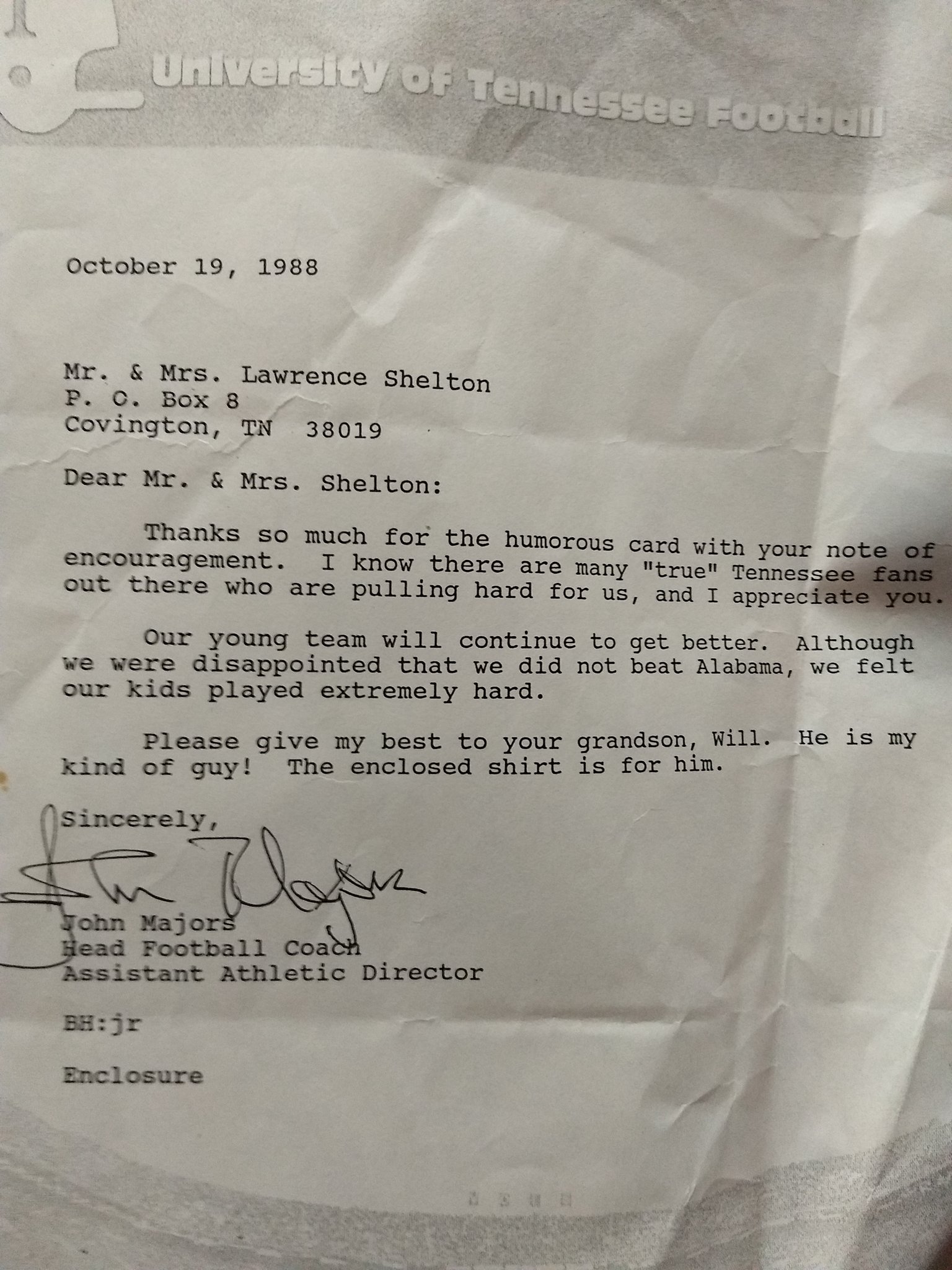
Tennessee, as I know you’ll recall, did alright from there. And not too bad for the next 13 years either.
Coach Majors only got the next four of them. He won back-to-back SEC titles in 1989 and 1990, and gave us one of the greatest wins in program history in South Bend in 1991.
I was 11 in 1992; too young to fully understand everything that happened with Majors and Fulmer. Having written on the Vols for the last 15 years, most of which have been the kind when you do wonder if your children will care, there’s a part of me that looks back at all that and says, wait, we moved on from Majors after all the good of 89-91 because he lost to Arkansas by one, national champion Alabama by seven, and South Carolina by one?
And we did. And it worked, though that’s not at all the right word really. We love Phillip, we love Johnny, etc.
But now, nearly 30 years removed from all that, both Majors and Fulmer are examples of how none of us are ever fully defined by our highest or lowest moments.
My generation was sensationally blessed to grow up with those teams from 1989-2001. But I started going when the Vols started 0-6. It wasn’t the winning; it never is, not really. You live long enough, your teams will win and lose.
Johnny Majors played on Tennessee teams that went 4-6 in 1954 and 10-1, SEC Champions in 1956. There are some around here old enough to argue he’s the only one to get a worse deal from the Downtown Athletic Club than Peyton Manning. He won a national championship at Pittsburgh in 1976, left for the alma mater, and went 4-7 his first year at Tennessee. His first eight teams finished the season unranked. Five of his last seven finished in the Top 15. Like Fulmer, he gave his all for Tennessee, and we asked him to leave. Like Fulmer, he never really left, even if he wanted to.
The longer I’m alive and the longer I sit at these keyboards, the more I’m grateful for the stuff beyond the box score that makes Tennessee what it is. For me, it was a letter and a t-shirt when we were 0-6 in 1988.
Johnny Majors is as Tennessee as anyone, ever. And he sure helped a lot of us fall in love with the Vols too.
Now that we’ve established why and how much returning production matters, let’s take a look at this year’s results. First up, all the kits and the caboodles:
| Team | Offense | O-Rank | Defense | D-Rank | Total | T-Rank |
|---|---|---|---|---|---|---|
| Georgia Tech | 84% | 14 | 92% | 2 | 89% | 1 |
| Oklahoma State | 84% | 15 | 90% | 4 | 88% | 2 |
| USC | 82% | 18 | 88% | 6 | 86% | 3 |
| Houston | 71% | 37 | 91% | 3 | 83% | 4 |
| UAB | 85% | 12 | 78% | 18 | 81% | 5 |
| Rice | 60% | 76 | 95% | 1 | 81% | 6 |
| Virginia Tech | 66% | 50 | 89% | 5 | 80% | 7 |
| Northwestern | 90% | 5 | 71% | 36 | 78% | 8 |
| Purdue | 80% | 23 | 77% | 19 | 78% | 9 |
| Old Dominion | 74% | 29 | 81% | 11 | 78% | 10 |
| Indiana | 65% | 52 | 85% | 9 | 77% | 11 |
| Louisville | 86% | 10 | 70% | 39 | 76% | 12 |
| Toledo | 73% | 31 | 77% | 20 | 76% | 13 |
| Florida State | 65% | 53 | 81% | 12 | 75% | 14 |
| North Carolina | 92% | 2 | 62% | 62 | 74% | 16 |
| Buffalo | 91% | 3 | 62% | 63 | 74% | 17 |
| Akron | 88% | 7 | 64% | 55 | 74% | 18 |
| Texas | 72% | 33 | 76% | 26 | 74% | 15 |
| Coastal Carolina | 84% | 16 | 65% | 51 | 73% | 20 |
| Western Kentucky | 53% | 97 | 86% | 8 | 73% | 19 |
| Texas A&M | 77% | 25 | 69% | 42 | 72% | 21 |
| UCF | 69% | 42 | 74% | 32 | 72% | 22 |
| Miami (Ohio) | 87% | 9 | 61% | 68 | 71% | 25 |
| East Carolina | 82% | 19 | 64% | 56 | 71% | 24 |
| Nevada | 76% | 27 | 67% | 50 | 71% | 29 |
| BYU | 72% | 34 | 70% | 40 | 71% | 31 |
| Memphis | 69% | 43 | 72% | 35 | 71% | 28 |
| Kentucky | 65% | 54 | 76% | 27 | 71% | 23 |
| Ohio | 63% | 65 | 77% | 21 | 71% | 26 |
| Ball State | 63% | 66 | 76% | 28 | 71% | 27 |
| Central Michigan | 62% | 71 | 77% | 22 | 71% | 30 |
| Mississippi | 84% | 17 | 60% | 76 | 70% | 38 |
| Georgia Southern | 82% | 20 | 62% | 64 | 70% | 36 |
| Illinois | 72% | 35 | 69% | 43 | 70% | 34 |
| Iowa State | 69% | 44 | 71% | 37 | 70% | 33 |
| Rutgers | 60% | 77 | 77% | 23 | 70% | 35 |
| Cincinnati | 60% | 78 | 77% | 24 | 70% | 37 |
| Georgia State | 55% | 90 | 80% | 13 | 70% | 32 |
| California | 93% | 1 | 53% | 101 | 69% | 41 |
| North Carolina State | 90% | 6 | 54% | 94 | 69% | 45 |
| Nebraska | 86% | 11 | 58% | 80 | 69% | 42 |
| Colorado State | 77% | 26 | 63% | 59 | 69% | 44 |
| Tennessee | 70% | 38 | 69% | 44 | 69% | 40 |
| Arizona | 64% | 59 | 73% | 33 | 69% | 43 |
| Oregon | 55% | 91 | 79% | 14 | 69% | 39 |
| Penn State | 74% | 30 | 64% | 58 | 68% | 47 |
| Pittsburgh | 73% | 32 | 64% | 57 | 68% | 46 |
| UTSA | 82% | 21 | 57% | 84 | 67% | 53 |
| Marshall | 81% | 22 | 57% | 85 | 67% | 54 |
| Louisiana-Lafayette | 65% | 55 | 69% | 45 | 67% | 48 |
| South Florida | 64% | 60 | 70% | 41 | 67% | 49 |
| Wisconsin | 55% | 92 | 75% | 31 | 67% | 51 |
| Washington State | 54% | 95 | 76% | 29 | 67% | 50 |
| Boston College | 49% | 105 | 79% | 15 | 67% | 52 |
| Appalachian State | 80% | 24 | 56% | 89 | 66% | 58 |
| Troy | 68% | 46 | 65% | 52 | 66% | 55 |
| Duke | 58% | 84 | 71% | 38 | 66% | 57 |
| Virginia | 46% | 112 | 79% | 16 | 66% | 56 |
| Middle Tennessee | 85% | 13 | 51% | 104 | 65% | 60 |
| Connecticut | 68% | 47 | 62% | 65 | 65% | 61 |
| Boise State | 64% | 61 | 65% | 53 | 65% | 64 |
| Texas Tech | 52% | 99 | 73% | 34 | 65% | 63 |
| Oregon State | 38% | 123 | 83% | 10 | 65% | 59 |
| Vanderbilt | 31% | 128 | 87% | 7 | 65% | 62 |
| West Virginia | 72% | 36 | 59% | 79 | 64% | 65 |
| Clemson | 70% | 39 | 60% | 77 | 64% | 66 |
| San Diego State | 63% | 67 | 63% | 60 | 63% | 68 |
| Arizona State | 44% | 115 | 76% | 30 | 63% | 67 |
| Wyoming | 69% | 45 | 58% | 81 | 62% | 69 |
| Arkansas | 63% | 68 | 62% | 66 | 62% | 70 |
| South Carolina | 53% | 98 | 68% | 46 | 62% | 71 |
| Georgia | 38% | 124 | 77% | 25 | 62% | 72 |
| Kansas State | 60% | 79 | 61% | 69 | 61% | 73 |
| Tulsa | 91% | 4 | 39% | 121 | 60% | 78 |
| South Alabama | 65% | 56 | 57% | 86 | 60% | 77 |
| Fresno State | 58% | 85 | 61% | 70 | 60% | 75 |
| Navy | 58% | 86 | 61% | 71 | 60% | 79 |
| Oklahoma | 49% | 106 | 68% | 47 | 60% | 74 |
| Washington | 32% | 126 | 79% | 17 | 60% | 76 |
| Charlotte | 75% | 28 | 48% | 110 | 59% | 81 |
| UCLA | 67% | 48 | 54% | 95 | 59% | 80 |
| Iowa | 65% | 57 | 54% | 96 | 59% | 84 |
| Kent State | 64% | 62 | 55% | 90 | 59% | 86 |
| Notre Dame | 61% | 74 | 58% | 82 | 59% | 83 |
| Florida | 57% | 88 | 61% | 72 | 59% | 82 |
| TCU | 55% | 93 | 61% | 73 | 59% | 85 |
| Southern Mississippi | 64% | 63 | 55% | 91 | 58% | 87 |
| Auburn | 63% | 69 | 55% | 92 | 58% | 88 |
| Missouri | 49% | 107 | 63% | 61 | 58% | 89 |
| North Texas | 61% | 75 | 54% | 97 | 57% | 91 |
| San Jose State | 51% | 100 | 61% | 74 | 57% | 92 |
| Colorado | 46% | 113 | 65% | 54 | 57% | 90 |
| New Mexico | 70% | 40 | 47% | 112 | 56% | 95 |
| Minnesota | 66% | 51 | 50% | 107 | 56% | 96 |
| Wake Forest | 39% | 120 | 68% | 48 | 56% | 93 |
| Louisiana-Monroe | 39% | 121 | 68% | 49 | 56% | 94 |
| SMU | 56% | 89 | 53% | 102 | 55% | 99 |
| Hawai'i | 50% | 104 | 58% | 83 | 55% | 98 |
| Liberty | 44% | 116 | 62% | 67 | 55% | 97 |
| Army | 63% | 70 | 48% | 111 | 54% | 102 |
| Stanford | 55% | 94 | 54% | 98 | 54% | 101 |
| Bowling Green | 51% | 101 | 57% | 87 | 54% | 100 |
| UNLV | 88% | 8 | 29% | 129 | 53% | 104 |
| Alabama | 64% | 64 | 46% | 114 | 53% | 103 |
| Ohio State | 59% | 82 | 49% | 108 | 53% | 105 |
| UTEP | 49% | 108 | 54% | 99 | 52% | 107 |
| Massachusetts | 48% | 109 | 55% | 93 | 52% | 106 |
| Utah State | 48% | 110 | 54% | 100 | 52% | 109 |
| Tulane | 39% | 122 | 60% | 78 | 52% | 108 |
| Temple | 70% | 41 | 38% | 122 | 51% | 110 |
| Florida Atlantic | 62% | 72 | 41% | 120 | 50% | 114 |
| Maryland | 59% | 83 | 44% | 118 | 50% | 112 |
| Michigan | 51% | 102 | 49% | 109 | 50% | 111 |
| Western Michigan | 40% | 119 | 57% | 88 | 50% | 113 |
| Kansas | 54% | 96 | 46% | 115 | 49% | 116 |
| Michigan State | 47% | 111 | 51% | 105 | 49% | 115 |
| Florida International | 30% | 129 | 61% | 75 | 49% | 117 |
| Mississippi State | 51% | 103 | 46% | 116 | 48% | 118 |
| Arkansas State | 62% | 73 | 37% | 123 | 47% | 120 |
| Northern Illinois | 42% | 118 | 51% | 106 | 47% | 119 |
| Texas State | 65% | 58 | 34% | 125 | 46% | 121 |
| Syracuse | 58% | 87 | 37% | 124 | 46% | 122 |
| Baylor | 67% | 49 | 29% | 130 | 45% | 124 |
| LSU | 32% | 127 | 53% | 103 | 45% | 123 |
| Miami (Florida) | 60% | 80 | 33% | 126 | 44% | 125 |
| Louisiana Tech | 60% | 81 | 33% | 127 | 44% | 126 |
| Eastern Michigan | 37% | 125 | 47% | 113 | 43% | 127 |
| Air Force | 43% | 117 | 42% | 119 | 42% | 128 |
| Utah | 46% | 114 | 30% | 128 | 37% | 130 |
| New Mexico State | 24% | 130 | 46% | 117 | 37% | 129 |
The teams with the most overall returning production are Georgia Tech, Oklahoma State, and USC. Also notable toward the top of the list are Virginia Tech, Purdue, Florida State, Texas, and North Carolina.
At the bottom of the list? Utah, which is why I’m not high on Utah despite the arrival of Jake Bentley. In all, seven Utes from last year’s team were drafted. On offense, the draft losses were limited to running back Zack Moss, although his contribution last season — 1,416 yards and 15 touchdowns — constitutes a huge hole all by itself. The bigger catastrophe is on the defensive side of the ball, where three defensive linemen and three defensive backs were all drafted and another defensive back left early but didn’t get picked. Kyle Whittingham knows what he’s doing, but that right there is a chore.
Other notables toward the bottom of the list are Miami, Baylor, LSU, Mississippi State, and Michigan.
Notable teams that return a lot on offense include Nebraska, Oklahoma State, Ole Miss, and USC. Teams with challenges on that side of the ball include LSU, Georgia, and Utah. More on Georgia’s offensive challenges in a minute.
Teams in particularly good shape on defense include Oklahoma State, Virginia Tech, USC, Florida State, and Purdue. On the flip side, Baylor, Utah, Miami, Mississippi State, and Alabama all have major holes to fill. With the way they recruit, the Tide are going to be fine, of course, but plugging those holes is on the to-do list.
Here’s how things shape up in the SEC:
| Team | Offense | O-Rank | Defense | D-Rank | Total | T-Rank |
|---|---|---|---|---|---|---|
| 64% | 5 | 46% | 13 | 53% | 12 | |
| 63% | 6 | 62% | 8 | 62% | 6 | |
| 63% | 7 | 55% | 11 | 58% | 10 | |
| 57% | 8 | 61% | 9 | 59% | 9 | |
| 38% | 12 | 77% | 2 | 62% | 7 | |
| 65% | 4 | 76% | 3 | 71% | 2 | |
| 32% | 13 | 53% | 12 | 45% | 14 | |
| 84% | 1 | 60% | 10 | 70% | 3 | |
| 51% | 10 | 46% | 14 | 48% | 13 | |
| 49% | 11 | 63% | 7 | 58% | 11 | |
| 53% | 9 | 68% | 6 | 62% | 8 | |
| 70% | 3 | 69% | 5 | 69% | 4 | |
| 77% | 2 | 69% | 4 | 72% | 1 | |
| 31% | 14 | 87% | 1 | 65% | 5 |
Overall, A&M leads the league in returning production, followed closely by Kentucky, Ole Miss, and Tennessee. This is just one of the many reasons we and so many others reaaaaally like the Aggies as a dark-horse pick for the West. It’s also why we Vols fans are still looking over our shoulders at Kentucky even though Tennessee is improving.
LSU brings up the rear with only 45%. The Tigers are basically starting over, and it’s not just because they lost Joe Burrow. Also gone are Clyde Edwards-Helaire, most of the offensive line, most of the linebackers, and Thorpe Award-winner Grant Delpit. And we haven’t even talked about the coordinators yet.
When you sort that thing by offense, Ole Miss takes the top spot by a long shot, followed by A&M and Tennessee. Lane Kiffin and the Rebels could make trouble for some folks in the West this fall.
Vanderbilt earns the distinction of returning the least amount of offensive production in the SEC, largely due to having every single one of last year’s quarterbacks either graduate or jump ship. LSU has offensive roster attrition you knew was coming.
Georgia has issues as well, most notably the early departures of quarterback Jake Fromm and running back D’Andre Swift and the loss of four starters along the offensive line to the NFL and the transfer portal. The offensive returning production for the Bulldogs is just one of the factors that I believe is going to lead to Florida overtaking them this year.
Vanderbilt wins today’s Out-Of-Balance award, as the Commodores return the most amount of defensive production to offset returning the least amount on offense. Go ‘Dores.
Right behind Vanderbilt is Georgia, a frightening prospect for a defense that finished first in the nation in both rushing and scoring defense last fall. Whatever challenges they might face on offense, the defense may be able to erase. Kentucky’s right there with the Bulldogs, returning nearly as much from a defense that finished in the Top 25 last season.
Teams with more work to do than most on that side of the ball are Mississippi State, Alabama, LSU, and Auburn. Most of those are recruiting well enough to weather the storm.
Does anything in either of those lists jump out at you as being particularly important? Does anything in either of them not matter at all for other reasons? Tell us what you think.
In analyzing teams for our annual Gameday magazine, we take a variety of factors into account. One of the core data points is a team’s “returning production,” the idea being that experience matters. Generally speaking, any given player should be better this year than last and should be much better as a senior than he was as a freshman.
Given that, returning more production should be better for a team than returning less, at least to some degree. If all of your guys are back, your team should be bigger, better, stronger, and more experienced. Having everybody back from last year’s team by itself isn’t probative of how good a team is going to be, but it should have some bearing on how much better or worse they should be, assuming all of the other variables remained constant.
Of course, those other variables are always shifting around from year-to-year, too, and depending on how they change, they can affect projections for a team more or less than returning production. Those other factors include (1) how well the team has recruited to replace outgoing players, (2) head coaching and coordinator continuity, and (3) the team’s baseline, meaning how good the team actually was last year in competition on the field.
Returning production, then, isn’t intended to be the end of the analysis. It’s merely one factor among many, and it can itself be influenced positively or negatively by the other factors, most notably recruiting. Those other factors can’t, however, eliminate the importance of returning production altogether. For instance, a team that recruits especially well can do a better job of replacing outgoing talent than one that doesn’t, but recruiting can’t really replace experience very well at all. Experience must be earned on the field in live fire. A roster full of 5-star freshmen could overwhelm a roster full of 2-star sixth-year seniors, of course, but all else being equal, teams that are both talented and experienced should beat teams that are one but not the other.
Also, returning production isn’t just about how many players or starters return for a team. It’s about the “production” returning to this year’s team. Our returning production analysis cares less about how many players or starters are back and more about what percentage of last year’s rushing yards, receiving yards, passing yards, tackles, sacks, tackles for loss, and pass breakups are back on the field this fall. Games played and games started are sometimes factored in, but only as a proxy for production when production is difficult to measure. For instance, offensive linemen (and to a somewhat lesser degree, defensive linemen) generally don’t have stat sheets. Whether they’re valuable to their own team is best measured by how often their coaches put them on the field.
So, when we analyze teams with an eye to the upcoming season, returning production is always one of the things we look at first. All else being equal, should we expect this team to be better or worse than it was last year? Once we have that, we then turn to the other factors to determine how much or how little it might matter.
This year’s magazine (which you can pre-order now for a mid-June delivery) includes our ranking of all of the FBS teams by offensive, defensive, and overall returning production with a spotlight on the SEC teams. We’re going to post both of those temporarily here tomorrow so that we can discuss some of the more interesting results.
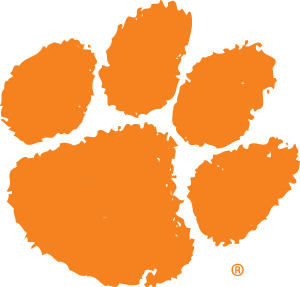
The 2018 National Champions nearly did it again last year but ran into a Bayou Buzzsaw wielded by Heisman Trophy-winner Joe Burrow in the 2019 championship game. Balance was the theme of the season for the Tigers with the offense putting up 529 yards per game and the defense holding opponents to only 288. The offense ranked No. 5 in the nation, and the defense ranked No. 6.
The Tigers this year aren’t so much re-loading as they are just pulling the trigger again. Three players – receiver Tee Higgins, linebacker Isaiah Simmons, and cornerback A.J. Terrell – left early for the NFL, and the offense loses four seniors along the offensive line, but most of the key components from last year’s near-national champions are back. Trevor Lawrence, Travis Etienne, and Justyn Ross will star in the offense, and most of the defensive line returns as well.
The biggest concern on the schedule is a Nov. 7 date with Notre Dame in South Bend. Expect the Tigers to roll through the ACC again this season right into the playoff.
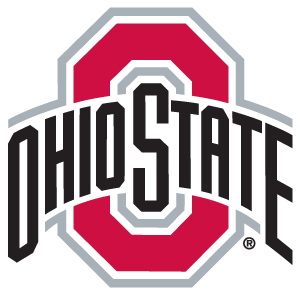
The Buckeyes navigated the transition from Urban Meyer to Ryan Day just fine, thank you very much, following up a 13-1 season in 2018 with another one in 2019. They beat five ranked teams on their way to the College Football Playoff semifinal, where they lost a close one to Clemson. Like Clemson, Ohio State did it with balance: the nation’s No. 1 defense and No. 4 offense.
Chase Young and Jeff Okudah were both selected in the Top 3 picks of the NFL Draft, and J.K. Dobbins was picked No. 23, but there’s plenty of talent left behind. Justin Fields returns for another run at the Heisman with Master Teague III and Chris Olave in supporting roles. And the defense has talented guys ready to fill the voids left by Young and Okudah.
An early test in Eugene against the Oregon Ducks will set the tone, and they’ll have to contend with the regular minefield that is the Big 10 schedule, but the Buckeyes are positioned for the playoff again this year.

Alabama missed the playoff for the first time last fall but finished the season 11-2, the two losses coming to then-No. 2 LSU in the regular season by five points and then-No. 15 Auburn by three points.
As usual, the NFL has raided Alabama’s roster. Nine players from last year’s team were drafted, four of them in the first round. But running back Najee Harris returns, and the receiving corps gets DeVonta Smith and Jaylen Waddle back. Quarterback Mac Jones got a great deal of experience filling in for the injured Tua Tagovailoa last season, so he could take over again this fall, but he’ll also be challenged by elite prospect Bryce Young (GSEC6).
Alabama’s season kicks off with a game against Southern Cal, and the schedule also includes an early trip to Athens to take on a revenge-minded Georgia. They’ll also need to hold off SEC West opponents LSU, Auburn, and Texas A&M. That’s a ton of tough games, but don’t expect more than one of them to go sideways for the Tide.
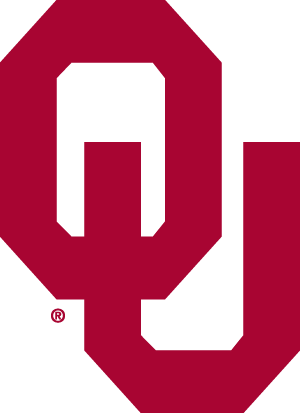
Oklahoma’s defense improved from No. 114 in the nation in 2018 to No. 38 last year under new defensive coordinator Alex Grinch. Meanwhile, Lincoln Riley’s offense just kept rolling on its way to a No. 3 national ranking, piling up 538 yards per game.
A perennial playoff participant, Oklahoma has a few additional holes to patch this fall. The offense was hardest hit with the graduation of Heisman Finalist Jalen Hurts and the early departure of receiver CeeDee Lamb to the NFL. Charleston Rambo will be ready to lead the receiving corps in the absence of Lamb, but Riley will likely have to entrust the offense to former 5-star prospect Spencer Rattler.
The defense will miss Kenneth Murray, Neville Gallimore, and Parnell Motley, but they’re in good shape and hoping to improve even more this fall under Grinch.
Assuming Riley does his thing with yet another new quarterback, expect the Sooners to contend for the national championship again this fall.

Florida has dramatically improved since Dan Mullen took over in 2018. After a 4-7 season in 2017, Mullen’s first team was 10-3, and they finished last season with an 11-2 record and a No. 6 national ranking. They’ve not been able to get past Georgia so far, though.
This could be the year.
Kyle Trask returns to the field for Florida this fall, and although the Gators’ offense loses receivers Van Jefferson, Freddie Swain, and Tyrie Cleveland, it returns pass-catching tight end Kyle Pitts and receiver Trevon Grimes. The defense will miss CJ Henderson, David Reese II, and Jonathan Greenard, but most other key pieces are back, including three different defensive backs with three interceptions each.
The Gators will need to improve the run game to increase their chances of jumping ahead of Georgia in the SEC East. But they were only one score apart last season, and this year they appear to be neck-and-neck. Expect the World’s Largest Outdoor Cocktail Party to decide the East this fall.
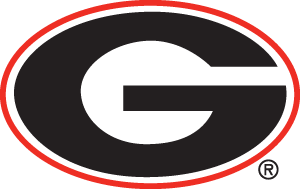
Georgia’s defense was exceptional last season, but struggles on offense – and a historically good LSU team – deprived the Bulldogs of an invitation to the playoff.
This offseason, new offensive coordinator Todd Monken will have to deal with the departures of quarterback Jake Fromm, running back D’Andre Swift, and all but one starter along the offensive line. The team also has to find a replacement for Lou Groza Award-winning kicker Rodrigo Blankenship. But most of last year’s exceptional defense returns to the field this fall, including Monty Rice, Azeez Ojulari, and Richard LeCounte.
Things could prove more difficult for the Bulldogs this year with Florida nipping at their heels, Tennessee closing the gap, and Alabama rotating onto the cross-divisional schedule for a mid-September game. Depending on how those three contests go, the Bulldogs could roll right back to Atlanta for the fourth year in a row or they could end up finishing third in the SEC East.
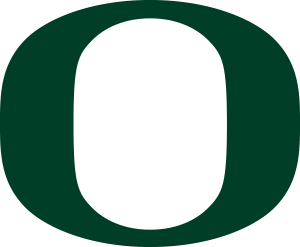
The Ducks had high hopes for the 2019 season, primarily because quarterback phenom Justin Herbert was returning along with one of the nation’s best offensive lines. Things didn’t go quite as planned. The team still finished 12-2 and ranked No. 5 in the nation, but the defense led the way.
Oregon returns a huge portion of that defense this fall, including literally everybody in the secondary, plus a couple of key linemen and linebacker Isaac Slade-Matautia, whose stat sheet looks like it’s just had Thanksgiving dinner.
The offense does need to replace Herbert and almost all of the offensive line, but the cupboard isn’t bare. CJ Verdell and Johnny Johnson III both return, as does All-American lineman Penei Sewell. And Joe Moorhead, former Mississippi State head coach and Penn State coordinator, takes the reins of the offense this fall for the Ducks.
Oregon trades last year’s game against Auburn for one against Ohio State this season. Regardless of how that one goes, the Ducks are in good shape for the Pac-12 title.

It wasn’t just Ohio State that dashed the dreams of Penn State last year, it was a surprising blow from then-No. 17 Minnesota under P.J. Fleck. So when Penn State lost offensive coordinator Ricky Rahne to Old Dominion, James Franklin went out and hired Gophers’ coordinator Kirk Ciarrocca, who’d been helping Fleck row the boat since 2017.
The Nittany Lions will have to contend with some early departures, including those of do-everything KJ Hamler and Yetur Gross-Matos, but they return a healthy amount of production from last year’s team, especially on offense. Quarterback Sean Clifford will miss Hamler, but can still count on the running back stable of Journey Brown, Noah Cain, and Devyn Ford running behind an offensive line that returns 80% of its starts.
The Buckeyes are still in the way, but stealing a coordinator from an up-and-coming rival and having most of a good roster back should have the Nittany Lions positioned to make another run at them this fall.
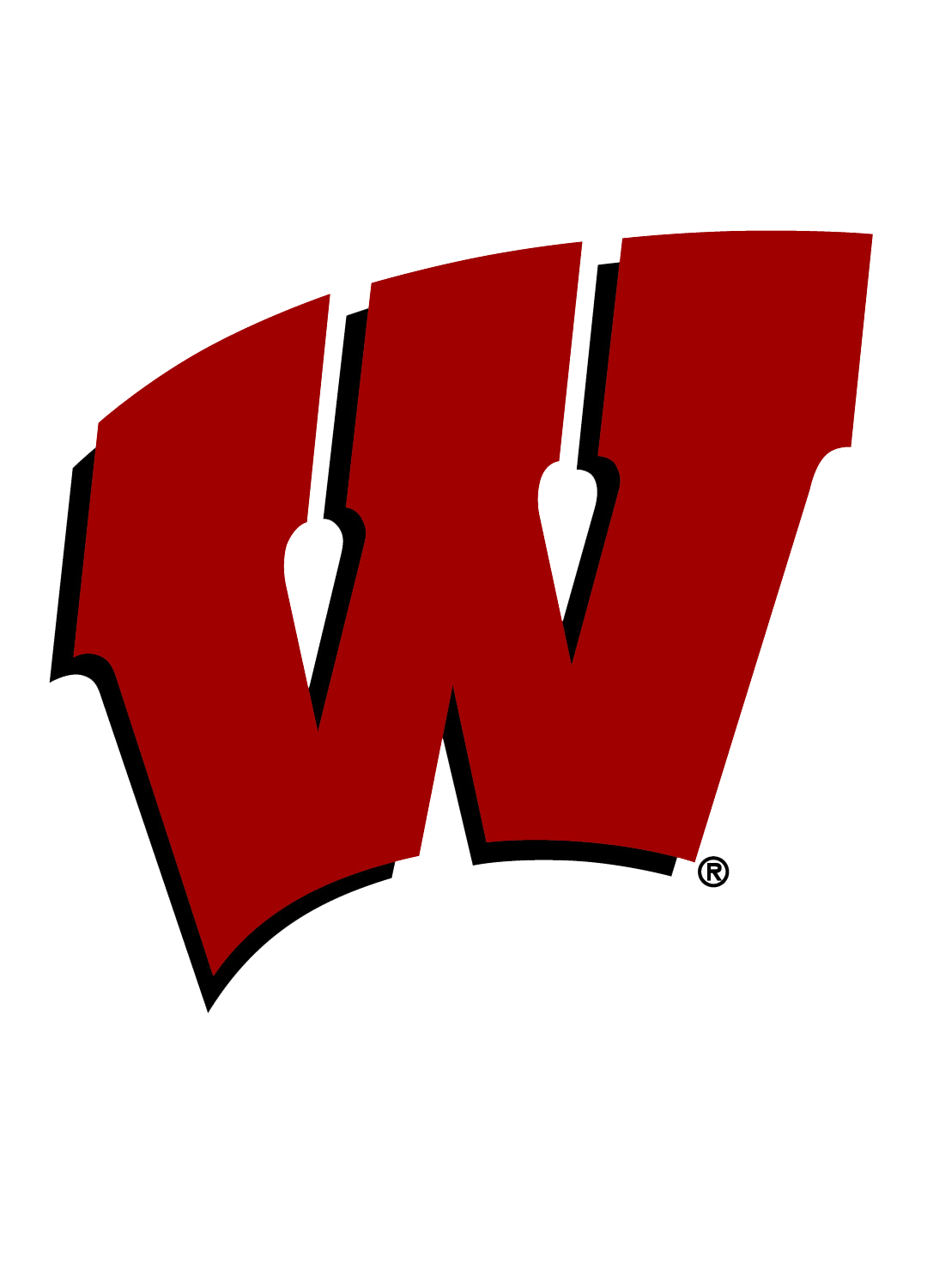
Three of the Badgers’ four losses last season came to Oregon in the Rose Bowl and Ohio State twice on its way to the playoff. The team was limited by a woeful passing attack that couldn’t be saved by either an excellent defense or Jonathan Taylor running for over 2,000 yards for the second year in a row.
And now, Taylor is gone, as is Quintez Cephus and nearly half of last year’s receiving yards with him. Quarterback Jack Coan is going to have his hands full piloting an offense with such huge holes to fill.
Fortunately, the defense returns largely intact despite the losses of linebackers Zack Baun and Chris Orr. That’s because nearly all of the other key pieces are back, including everyone in the secondary and everybody on the line except for one reserve.
Unless one of Wisconsin’s running backs is ready to run for 2,000 yards this fall, the most reasonable expectation for the Badgers is a season pretty similar to last year’s.

Jimbo Fisher’s second A&M team went 8-5, but those five losses were to LSU, Clemson, Alabama, Georgia, and Auburn.
The Aggies return much of their offense this fall, led by Kellen Mond, who threw for 2,897 yards and ran for another 500, and Isaiah Spiller, who added another 946 yards on the ground. The offense loses receivers Quartney Davis and Kendrick Rogers, but a solid pass-catching corps remains, led by Jhamon Ausbon. Plus, the offensive line returns 80% of its starts from last fall.
The defense loses a more significant amount of production from last year, the biggest losses being Justin Madubuike and Debione Renfro, but has plenty of talent remaining.
Most importantly, the Aggies trade last year’s game against Georgia for one against Vanderbilt and last season’s non-conference game against Clemson for one against Colorado. They still have Alabama, LSU, and Auburn to contend with, but the road’s a lot easier this year.
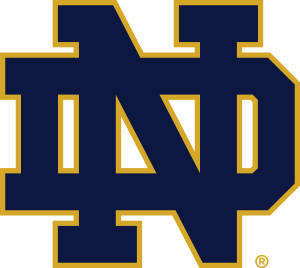
Notre Dame only lost twice in 2019, once to then-No. 3 Georgia and once to then-No. 19 Michigan. They did that with a Top 20 defense and an offense that somehow ranked in the Top 15 in points scored despite barely ranking inside the Top 50 in rushing, passing, and overall yards per game.
The offense returns quarterback Ian Book, but loses over 2,000 receiving yards with the departures of Chase Claypool, Chris Finke, and Cole Kmet.
On defense, Notre Dame must replace two draft picks in Julian Okwara and Khalid Kareem, plus Jamir Jones. The secondary will be without safety Alohi Gilman and cornerback Troy Pride Jr., but they’ve been recruiting well enough to have guys ready to step in to fill those spots.
The Fighting Irish host Clemson this fall and play Wisconsin at Lambeau Field in addition to appointments with Stanford and USC. Whether they can get past all of that and make it back to the playoff will depend largely on whether they can increase the offensive firepower.
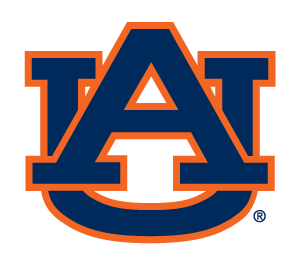
Auburn’s 9-4 record last year included losses to four ranked teams in Florida, Georgia, LSU, and Minnesota, and a win over Alabama.
New offensive coordinator Chad Morris will command an offense that returns Bo Nix and his top three targets from last season, led by receiver Seth Williams. The bad news is that they lose running back JaTarvious Whitlow and return only five out of 66 total starts along the offensive line.
There are a couple of huge holes on defense as well. Up front, they’ll miss All-American Derrick Brown and fellow lineman Marlon Davidson, and the secondary loses four players who started at least 12 games, including first-round draft pick Noah Igbinoghene.
The addition of Morris to the offense should help, but it’s tough in the ever-competitive SEC West, not to mention having Georgia as your permanent SEC East rival. If they make the most of their key games, the Tigers could finish well, but a new-look offensive line could make it difficult.

Tom Herman heads into 2020 with two new coordinators. On offense, it’s Mike Yurcich, most recently passing game coordinator at Ohio State, but prior to that coordinator at Oklahoma State from 2013-18. The new guy on defense is Chris Ash, who was head coach at Rutgers from 2016-19.
Texas ranks as one of the top teams in the nation in returning production, both on offense and on defense. Most importantly, Sam Ehlinger and running back Keaontay Ingram return for the offense. The receiving corps loses nearly 2,000 receiving yards with the departure of Devin Duvernay and Collin Johnson, but receiver Brennan Eagles returns to lead a still-solid unit. Joseph Ossai is back to lead the defense.
So much returning production, plus the fact that Texas is still recruiting like a national champion, could mitigate the learning curve associated with two new coordinators. They’ll need everything clicking to get past Oklahoma in the Big 12.
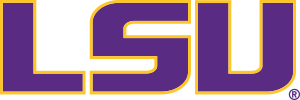
Last season was a magical one for Ed Orgeron, Joe Burrow, and the LSU Tigers. The team strung together a perfect 15-0 season capped by a decisive victory in a national championship game 90 minutes from campus.
But that was last year.
This year, only four college football teams rank lower in offensive returning production, and the Tigers’ defensive returning production isn’t much better. It’s not just Burrow, either. It’s Clyde Edwards-Helaire. It’s most of the offensive line and most of the linebackers. It’s Thorpe Award-winner Grant Delpit, and it’s both coordinators.
There is plenty of talent left on the roster to mitigate such catastrophic losses to some degree, however. Ja’Marr Chase returns to lead a still-star-studded receiving corps, and All-American defensive back Derek Stingley Jr. returns to lead a solid secondary.
But the Tigers will have a very difficult time duplicating what they did last year.

The Cowboys finished only 8-5 last season, but they return more overall production than anyone else except Georgia Tech.
Quarterback Spencer Sanders returns, as do five of his top six pass-catchers from last season, including Tylan Wallace. Most importantly, running back Chuba Hubbard returns as well. Hubbard ran for an eye-popping 2,094 yards and 21 touchdowns last fall.
As good as things are on the offensive side of the ball, things are even better on defense. They return nearly 90% of their starts in the secondary, all but one reserve player on the line, and the key pieces from last year’s linebacking unit, including Amen Ogbongbemiga, who had 100 tackles last season.
The Cowboys have road games at Oklahoma and Baylor ahead of them this fall, but they get Texas and Iowa State at home. With so much returning production, they could make things interesting in the Big 12 this fall.
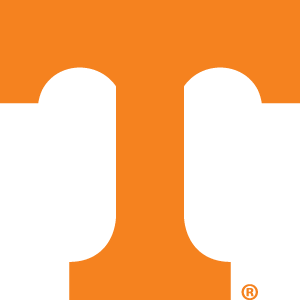
Tennessee went from receiving death threats in October to receiving votes in the final AP Poll in January, turning a catastrophic 1-4 start into a 7-1 finish for an 8-5 season.
This fall, they’ll have the same head coach, offensive coordinator, and defensive coordinator in consecutive years for the first time since 2014, plus an enviable amount of roster continuity to boot. On offense, the returning players include all of the quarterbacks, all of the running backs, and all of the starting offensive linemen, plus Georgia transfer Cade Mays, if he’s eligible. They do lose three pass-catchers from last fall, but Josh Palmer’s back to lead a still-talented unit. On defense, they return everybody on the line, all but one in the secondary, and all but two at linebacker.
With late-season momentum and coaching and roster continuity they haven’t had in a long time, look for Tennessee to not only maintain its lead over the second tier of the SEC East but also to make things much more interesting against Georgia and Florida this fall.

In his first year at Chapel Hill, Mack Brown led a Tar Heels team that had been 5-18 the two prior years to a 7-6 record that included a one-point loss to Clemson. The offense ended up No. 12 in the nation in total yards.
Almost all of that offense returns for Brown’s second act. His leading characters include quarterback Sam Howell, the team’s two leading rushers in Michael Carter and Javonte Williams, and seven of the team’s best pass-catchers. And the offensive line returns 50 of 65 starts.
The news is not quite as good on the defensive side of the ball. They lose two starting linemen, including fifth-round draft pick Jason Strowbridge, but they return most of the secondary and a solid linebacking corps led by Chazz Surratt and Jeremiah Gemmel.
Regardless of how an early test against a good Auburn team in the second game of the season turns out, expect further improvement from the Tar Heels this fall.
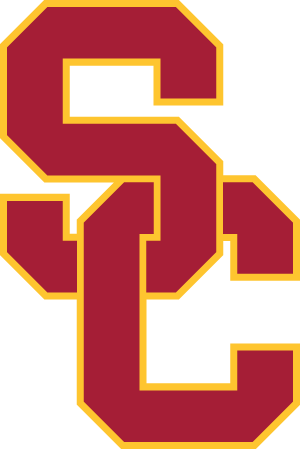
Coming off an 8-5 season, USC returns the third-most overall production in the nation. On offense, all of the Trojans’ passing yards are back, as are 99% of their rushing yards, most of their receiving yards, and a majority of their offensive line starts. They also return huge percentages of last year’s productivity on defense.
Quarterback Kedon Slovis returns to command the offense after throwing for 3,502 yards and 30 touchdowns last fall. He’ll miss Michael Pittman, an early second-round draft pick who piled up 1,275 receiving yards last fall, but a still-solid group remains, led by Amon-Ra St. Brown and Tyler Vaughns. And the entire herd of running backs returns looking to get on track behind an offensive line returning three starters. On defense, everybody’s back but lineman Christian Rector and ‘backer John Houston Jr.
With so much of last year’s roster returning, just getting the defense and running game going will go a long way toward getting the Trojans in the mix for the Pac-12 title.
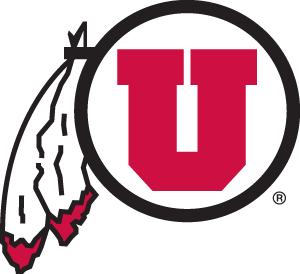
Last year, the Utes won their second consecutive Pac-12 South title on the strength of the nation’s No. 2 overall defense. They were so good on that side of the ball that the NFL came and stole it all.
In all, six defensive players were drafted and another left early but wasn’t picked. The losses include Bradlee Anae, Leki Fotu, John Penisini, Jaylon Johnson, Terrell Burgess, Julian Blackmon, and Javelin K. Guidry. That pretty much leaves Mika Tafua and Davin Lloyd to lead an entirely new unit.
The offense didn’t escape the raid, either, as running back Zack Moss was drafted as well. And what the NFL didn’t get, graduation did, as quarterback Tyler Huntley is out of eligibility. He’ll be replaced by either Cameron Rising, who transferred from Texas in 2018, or Jake Bentley, a graduate transfer who started 33 games at South Carolina.
That’s a lot of roster attrition to overcome, but Kyle Whittingham didn’t just luck into seven draft picks. He made it happen, and he’s probably cycling up to do it again.
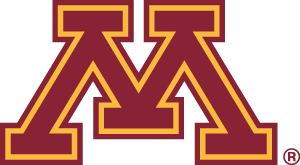
Minnesota merrily rowed all the way to an 11-2 record last fall, losing only to Top 15 teams Iowa and Wisconsin and beating Auburn in the Outback Bowl. The defense was special – ranking No. 10 in the nation – and the offense was good enough to get them to a first-place finish in the Big 10 West and a No. 10 ranking in the final AP Poll.
Now the Gophers have to figure out how to do it after losing a significant amount of production, especially on defense. Four players on that side of the ball were drafted, including All-American defensive back Antoine Winfield Jr.
The offense loses receiver Tyler Johnson and running back Rodney Smith, but returns quarterback Tanner Morgan, receiver Rashod Bateman, and all of the offensive linemen.
The schedule doesn’t seem too daunting for the Gophers. They travel to Madison to take on Wisconsin, but get Michigan and Iowa at home. If they can shore up the losses, particularly on defense, they could do as well or better than last year.
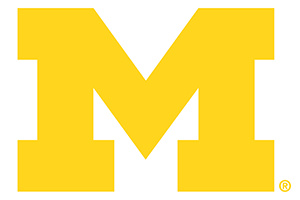
With rival Ohio State breaking in a new coach and the Wolverines returning most of their key pieces last year, Michigan looked ready to take control of the Big 10. They only lost four games, and all of them to ranked teams, but the missed opportunity had to sting.
And now, the window of opportunity looks to be closing again, as Michigan returns very little production from either the offense or the defense this fall. Shea Patterson has graduated, and ten players were drafted, three of whom left early.
Joe Milton and Dylan McCaffrey will battle to replace Patterson at quarterback. Whoever wins will have help from running backs Zach Charbonnet and Hassan Haskins and receivers Ronnie Bell and Nico Collins. Linebacker Cameron McGrone and defensive back Ambry Thomas will have the responsibility of getting the defense ready.
The Wolverines will have their opportunities again this season against Ohio State and others. They just need to take advantage of them.
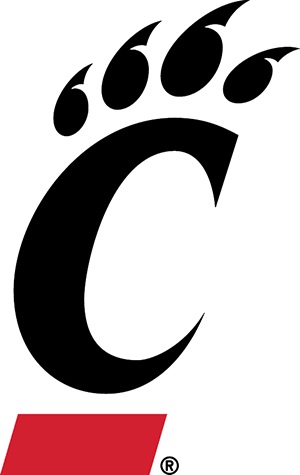
Cincinnati’s 11-3 record in 2019 included two losses to conference rival Memphis and a non-conference loss to Ohio State. The Bearcats’ offense wasn’t really up to the task, but a Top 40 defense helped them achieve a No. 21 ranking in the final AP Poll.
This year, the defense loses linebackers Bryan Wright and Perry Young, but gets all of its starters on the defensive line and most of its key guys in the secondary back.
The offense will be looking for improvement, and returns three key pieces to try to make that happen. Quarterback Desmond Ridder had 2,164 yards and 18 touchdowns passing and 650 yards and 5 touchdowns rushing last year. He’ll have his leading receiver Alec Pierce back with him as well this fall. They’ll miss 1,000-yard rusher Michael Warren II, but Gerrid Doaks looks to pick up the slack.
The Bearcats travel to UCF this fall but get both Memphis and Houston at home. If the offense can find a groove, they’ll have a shot at revenge with Memphis this fall.
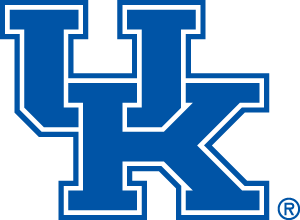
Kentucky posted an 8-5 record without a true quarterback last season. This year, Terry Wilson returns, but he may have to fight off Auburn transfer Joey Gatewood to win back the job. Whoever lines up under center will have nearly 2,000 yards of returning rushing yards to lean on and 80% of the offensive line back. The team’s Top 25 defense loses a key piece at each level but remains a mostly solid group. If they get things worked out in the passing game, they could make some noise in the SEC East.

Bryan Harsin and the Broncos are poised to make it three out of the last four Mountain West titles thanks largely to the return of quarterback Hank Bachmeier and 1,000-yard rusher George Holani, both of whom earned their stripes as freshmen last year. The team does have significant concerns along the line of scrimmage, however, as most of the starters on both sides have departed, including edge rusher Curtis Weaver. Boise State will get a chance to shine when Florida State comes to town the third week of the season.
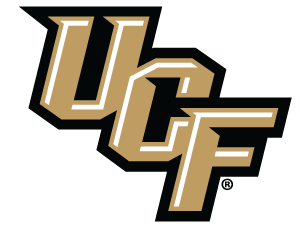
UCF looks to get back to the top of the American Athletic after finishing second to Cincinnati last fall. This year, the nation’s No. 2 offense returns quarterback Dillon Gabriel, who threw for 3,653 yards and 29 touchdowns as a freshman last season. McKenzie Milton, who missed all of last season with a serious leg injury, may be ready to compete for the position again as well. Eight starters return on defense, including most of the secondary. Hosting Cincinnati late may decide the season for the Knights.
Gameday on Rocky Top 2020 should hit the newsstands all over the state of Tennessee (and select locations in neighboring states) somewhere in the back half of June. Hey, that’s an astounding degree of precision in these uncertain times.
As a Gameday on Rocky Top reader, you can get it before then, because we get our copies at the same time the distributor gets theirs, and we can get copies in the mail the next day while the distributor needs another week to get them into the stores.
And when you order directly from us, you don’t have to wear a mask. 🙂
So, pre-order our Gameday on Rocky Top 2020 college football preseason magazine online, and we’ll ship it to you the day after we receive it, which we expect to be somewhere around Wednesday, June 17.
With all of the uncertainty this year, we are printing fewer copies, so while the magazine is going to be on the newsstands in Tennessee and in limited areas in neighboring states, it could be a teensy bit more difficult to find this summer. So, skip the scavenger hunt and the face mask and reserve your copy now.
As always, our Gameday magazine is More of Your Favorite Team and No Ads. We narrow our focus and go deeper on the teams you care most about and intentionally avoid adding content you’re probably not going to read. In Gameday on Rocky Top, for instance, we have 48 pages of content devoted exclusively to the 2020 Tennessee Volunteers, and the other 64 pages focus on the Vols’ 2020 opponents, along with their competition in the SEC and the national Top 25. We want you to be interested in every page of our publication from cover to cover.
Also, if you’re looking for good and solid reasons to believe in the Vols this season, this is for you. The longer we wrote, the more these things magnified our optimism for the season:
That’s just a taste of why we’re even more optimistic than usual about the Vols this season.
Here are the ways you can get a copy:
We also plan to offer this year’s edition electronically at a lower price point through some combination of downloadable PDF, mobi, epub, and/or online membership. We hope to have more details on that early next week, so if you’re interested in an electronic version, stay tuned.
Go Vols.
You must be logged in to post a comment.